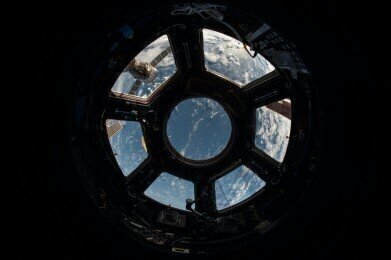News & Views
NASA Announces Plans to Launch Mars Bound Aircraft
Jul 29 2015
The world is infatuated with the idea of life on Mars, however in recent weeks the concept of an aircraft on the Red Planet has stolen the spotlight. As part of its manned 2020 missions, NASA has announced that it will be launching a drone to scout landing locations for its space age planes.
NASA has named its first prototype the Preliminary Research Aerodynamic Design to Land on Mars, also referred to as Prandtl-m. If all goes to plan the craft will be ready to roll early next year.
“The Prandtl-m could overfly some of the proposed landing sites for a future astronaut mission and send back to Earth very detailed high resolution photographic map images that could tell scientists about the suitability of those landing sites,” says Al Bowers, NASA Armstrong chief scientist and Prandtl-m program manager.
Miniature missions to Mars
Once completed the state-of-the-art aircraft will weigh in at less than a pound, with a wingspan of just 24 inches. However, given the fact that Mars gravity is just 38% of that experienced on Earth, the plane will actually weigh 2.6 pounds when located on the Blue Planet.
Before launching the aircraft NASA plans to test drive the plane in the Earth’s atmosphere. A hot air balloon will elevate it to an altitude of 100,000 feet in order to recreate the conditions of the Martian atmosphere. According to Bowers the tests will allow the team to make necessary tweaks and modifications, as well as identify any potential issues.
When it comes to launching the craft into outer space it will be deployed from a 3U CubeSat located in the aero shell of a Mars rover. All three miniature satellites measures in at just four inches in diameter which makes the entire mission relatively pint sized. Flight times will be capped at around 10 minutes and have a scouting range of 20 miles.
“The aircraft would be part of the ballast that would be ejected from the aeroshell that takes the Mars rover to the planet,” explains Bowers. “It would be able to deploy and fly in the Martian atmosphere and glide down and land.”
NASA calls on bright young minds
To fast-track the project to the final stages NASA has commissioned a talented team of summer community college students to help design and build the final craft. While the ultimate design has not yet been finalised NASA has confirmed that it will be crafted with composite material such as fiberglass or carbon fiber. Bowers explains that this is because space engineers “Believe this particular design could best recover from the unusual conditions of an ejection.”
Gravity is a mind-blowing phenomenon and will play an integral role in helping NASA pull off the Prandtl-m mission. However gravity isn’t the strongest force known to humankind. Ultracentrifuges have the ability to generate forces thousands or millions of times stronger than the force of gravity, as explored in ‘Technical Considerations for Ultracentrifugation.’
Digital Edition
Lab Asia 31.2 April 2024
April 2024
In This Edition Chromatography Articles - Approaches to troubleshooting an SPE method for the analysis of oligonucleotides (pt i) - High-precision liquid flow processes demand full fluidic c...
View all digital editions
Events
May 05 2024 Seville, Spain
InformEx Zone at CPhl North America
May 07 2024 Pennsylvania, PA, USA
May 14 2024 Oklahoma City, OK, USA
May 15 2024 Birmingham, UK
May 21 2024 Lagos, Nigeria





.jpg)












